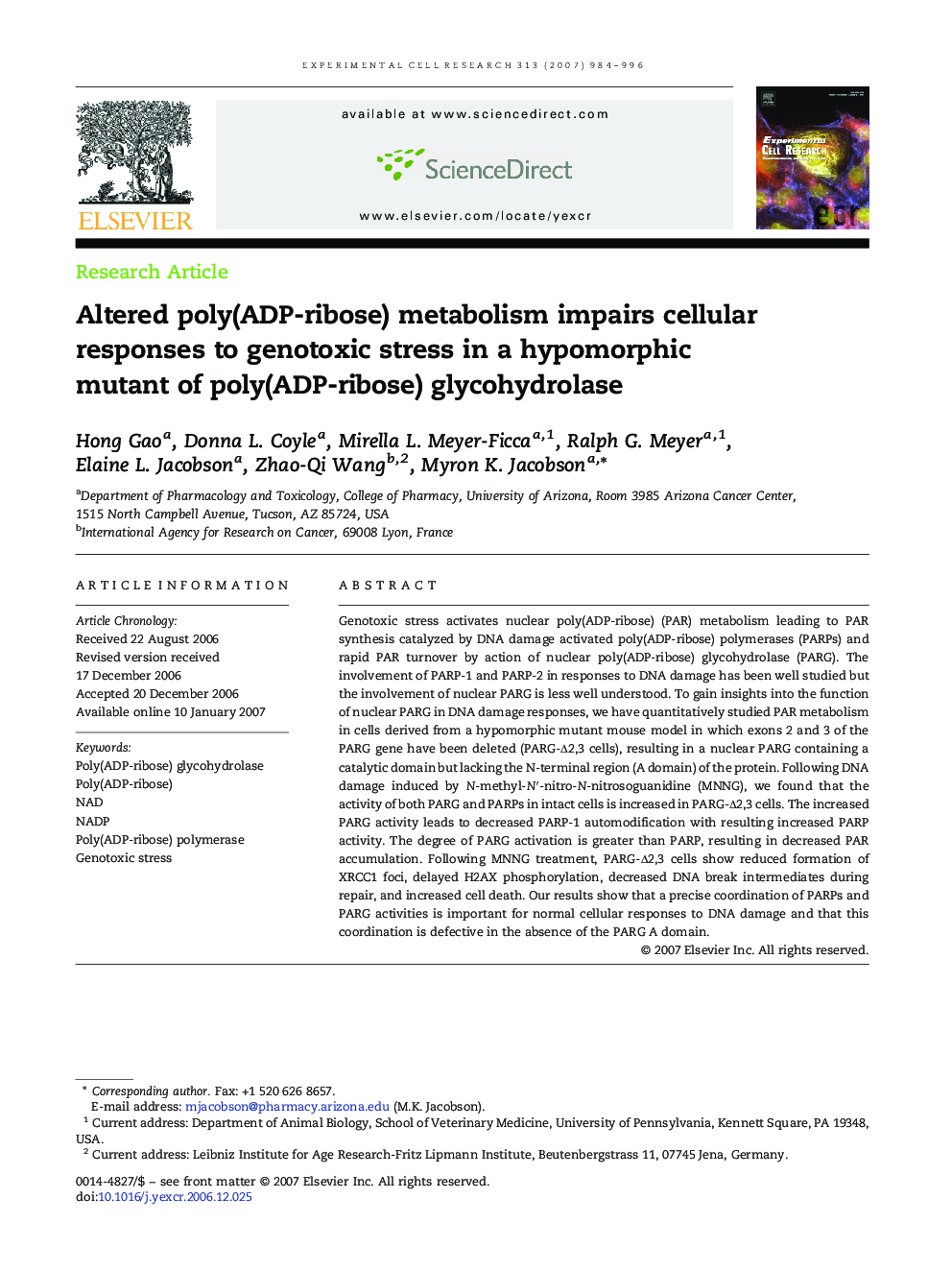| Article ID | Journal | Published Year | Pages | File Type |
|---|---|---|---|---|
| 2132750 | Experimental Cell Research | 2007 | 13 Pages |
Genotoxic stress activates nuclear poly(ADP-ribose) (PAR) metabolism leading to PAR synthesis catalyzed by DNA damage activated poly(ADP-ribose) polymerases (PARPs) and rapid PAR turnover by action of nuclear poly(ADP-ribose) glycohydrolase (PARG). The involvement of PARP-1 and PARP-2 in responses to DNA damage has been well studied but the involvement of nuclear PARG is less well understood. To gain insights into the function of nuclear PARG in DNA damage responses, we have quantitatively studied PAR metabolism in cells derived from a hypomorphic mutant mouse model in which exons 2 and 3 of the PARG gene have been deleted (PARG-Δ2,3 cells), resulting in a nuclear PARG containing a catalytic domain but lacking the N-terminal region (A domain) of the protein. Following DNA damage induced by N-methyl-N′-nitro-N-nitrosoguanidine (MNNG), we found that the activity of both PARG and PARPs in intact cells is increased in PARG-Δ2,3 cells. The increased PARG activity leads to decreased PARP-1 automodification with resulting increased PARP activity. The degree of PARG activation is greater than PARP, resulting in decreased PAR accumulation. Following MNNG treatment, PARG-Δ2,3 cells show reduced formation of XRCC1 foci, delayed H2AX phosphorylation, decreased DNA break intermediates during repair, and increased cell death. Our results show that a precise coordination of PARPs and PARG activities is important for normal cellular responses to DNA damage and that this coordination is defective in the absence of the PARG A domain.
